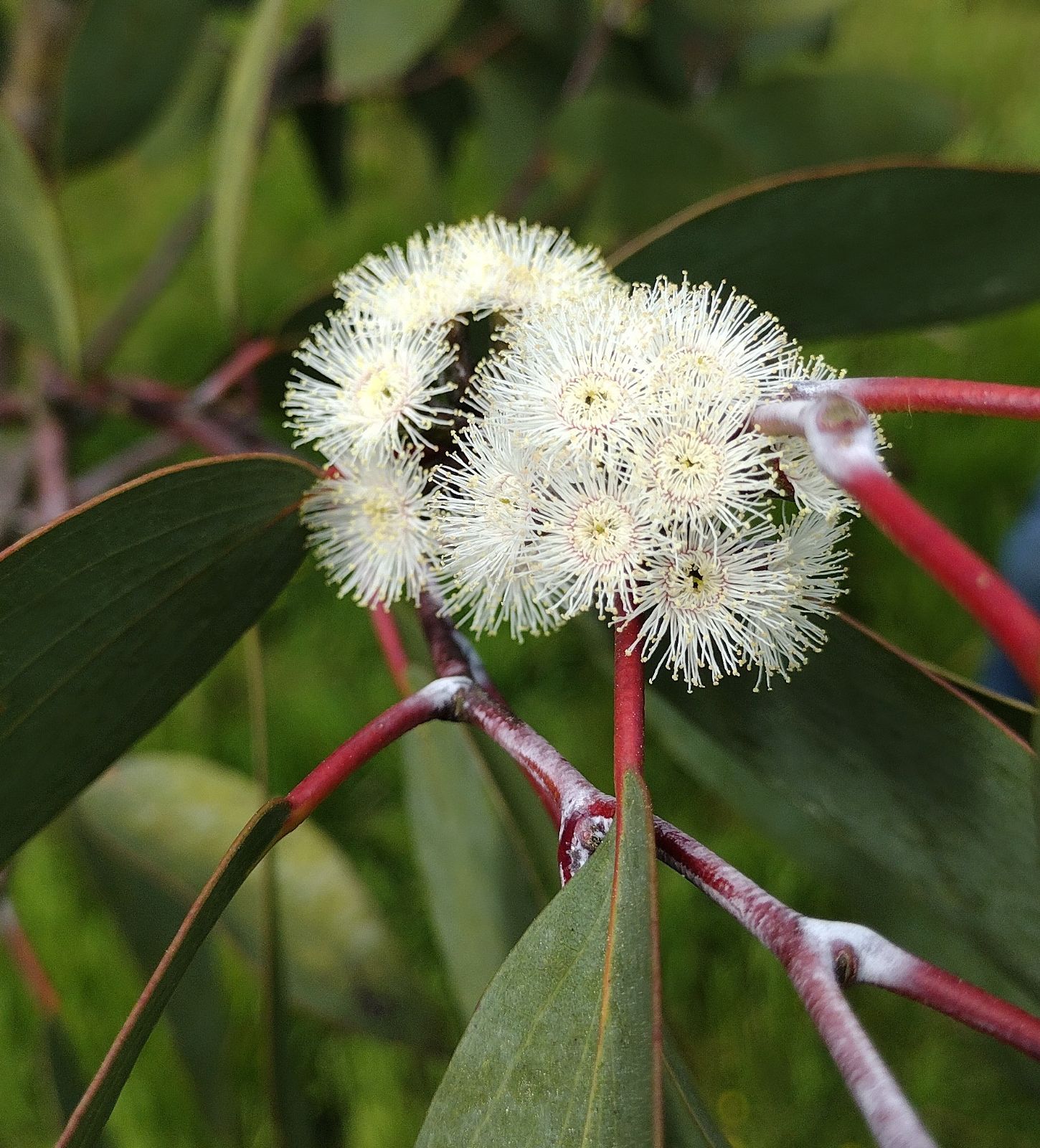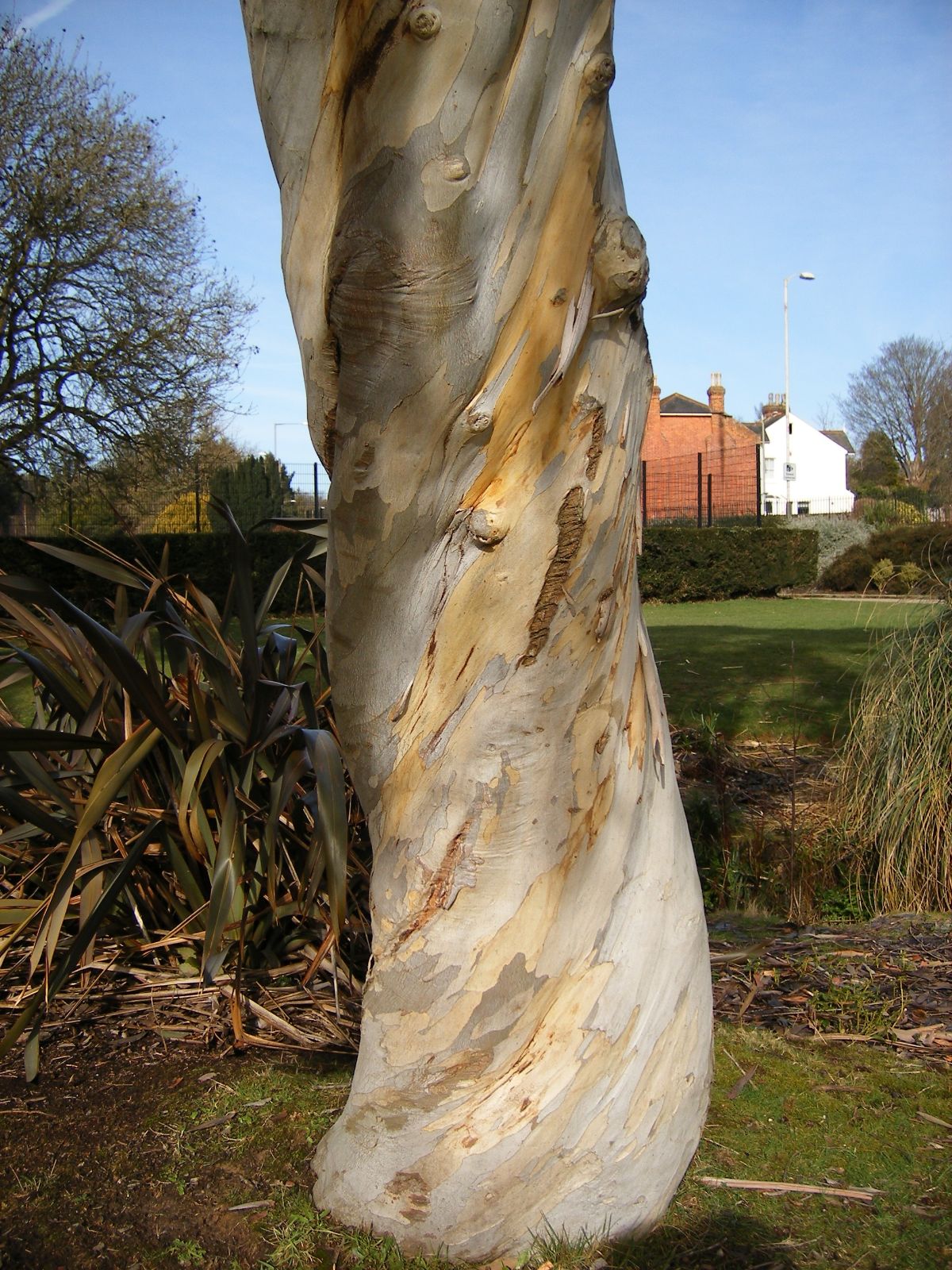Eucalyptus pauciflora
Credits
Article from Bean's Trees and Shrubs Hardy in the British Isles
Article from New Trees by John Grimshaw & Ross Bayton
Recommended citation
'Eucalyptus pauciflora' from the website Trees and Shrubs Online (treesandshrubsonline.
Other taxa in genus
- Eucalyptus acaciiformis
- Eucalyptus albida
- Eucalyptus amygdalina
- Eucalyptus archeri
- Eucalyptus blakelyi
- Eucalyptus bridgesiana
- Eucalyptus brookeriana
- Eucalyptus camaldulensis
- Eucalyptus camphora
- Eucalyptus chapmaniana
- Eucalyptus cinerea
- Eucalyptus coccifera
- Eucalyptus cordata
- Eucalyptus crenulata
- Eucalyptus cypellocarpa
- Eucalyptus dalrympleana
- Eucalyptus delegatensis
- Eucalyptus elliptica
- Eucalyptus fastigata
- Eucalyptus fraxinoides
- Eucalyptus globulus
- Eucalyptus gregsoniana
- Eucalyptus gunnii
- Eucalyptus johnstonii
- Eucalyptus kybeanensis
- Eucalyptus lacrimans
- Eucalyptus laophila
- Eucalyptus leucoxylon
- Eucalyptus macarthurii
- Eucalyptus macrorhyncha
- Eucalyptus mannifera
- Eucalyptus melliodora
- Eucalyptus mitchelliana
- Eucalyptus moorei
- Eucalyptus morrisbyi
- Eucalyptus neglecta
- Eucalyptus nicholii
- Eucalyptus nitens
- Eucalyptus nova-anglica
- Eucalyptus obliqua
- Eucalyptus oreades
- Eucalyptus ovata
- Eucalyptus parvula
- Eucalyptus praecox
- Eucalyptus radiata
- Eucalyptus regnans
- Eucalyptus remota
- Eucalyptus risdonii
- Eucalyptus rodwayi
- Eucalyptus rubida
- Eucalyptus saligna
- Eucalyptus sideroxylon
- Eucalyptus stellulata
- Eucalyptus subcrenulata
- Eucalyptus tenuiramis
- Eucalyptus urnigera
- Eucalyptus viminalis
A tree usually seen under 60 ft high in the wild state, with several crooked stems produced from near ground-level; trunk smooth with a deciduous bark, white when freshly exposed, darkening to grey; young growths dark red and lustrous. Juvenile leaves opposite for three to five pairs, sessile or short-stalked, ovate to almost orbicular, 1 to 21⁄2 in. long, 3⁄4 to 2 in. wide, grey-green, rather thick and leathery. Adult leaves alternate, stalked, broadly lanceolate to sickle-shaped, 21⁄2 to 6 in. long, 1⁄2 to 11⁄4 in. wide, thick and leathery and bright, glossy green on both surfaces. Inflorescence an axillary umbel of seven to twelve flowers on a stout common-stalk; buds club-shaped with a smooth and lustrous calyx-tube; anthers reniform. Fruit globose to pear-shaped; disk flat and thick; valves enclosed.
Native of Tasmania, Victoria and New South Wales; it is mainly a species of the mountains, found on the mainland from 2,500 to 5,500 ft, but from sea-level to 2,000 ft in Tasmania (to 3,500 ft in some localities); introduced before 1880. This is certainly one of the hardiest species, but in view of its wide range, both in latitude and altitude, some variability in frost resistance is to be expected. There is a good specimen in the Edinburgh Botanic Garden, growing in a rather exposed position near Inverleith House, planted around 1939; it measures 45 × 41⁄2 ft with a spread of about 30 ft (1965).
From the Supplement (Vol. V)
specimens: Kew, in Holly Walk, pl. 1967, 33 × 11⁄2 ft (1982); Trengwainton, Cornwall, 40 × 21⁄2 ft (1979); Edinburgh Botanic Garden, 31 × 23⁄4 ft (1970); Kilmun Forest Garden, Argyll, pl. 1952, 62 × 31⁄2 ft (1978).
[var. nana]. – This now has specific rank as E. gregsoniana L. Johnson & Blaxell.
† E. debeuzevillei Maiden E. pauciflora subsp. debeuzevillei (Maiden) L. Johnson & Blaxell. – Of probably the same order of hardiness as E. niphophila. Described in 1920, it can be distinguished from both E. pauciflora and E. niphophila in having distinctly angled flower-buds and fruits. It occurs at alpine elevations in south-eastern New South Wales, on the Jounama Peaks and for some way farther south and, unlike E. niphophila from the same general area, does not extend into Victoria.
There is an example of this species at Grey Timbers, Brimley, Devon, measuring 38 × 23⁄4 ft (1980).
E. niphophila – This species also has subspecific rank as E. pauciflora subsp. niphophila (Maiden & Blakely) L. Johnson & Blaxell.
specimens: Grey Timbers, Brimley, Devon, 41 × 51⁄4 ft (1979); Edinburgh Botanic Garden, 36 × 33⁄4 ft (1981); Logan Botanic Garden, Wigt., 50 × 31⁄2 ft (1979); Kilmun Forest Garden, Argyll, pl. 1955, 75 × 33⁄4 ft (1978); Castlewellan, Co. Down, pl. 1960, 42 × 11⁄4 ft (1982).
E. mitchelliana – A specimen at Kilmun, Argyll, pl. 1960, measures 50 × 21⁄2 ft (1978).
From New Trees
Eucalyptus pauciflora Sieber ex Spreng.
Cabbage Gum, Snow Gum, White Sallee
This species was described by Bean (B135) and Krüssmann (K50), and a key to the subspecies, based on that of Rule (1994), is provided below.
| 1a. | Wax present on any of the following structures: juvenile leaves, branchlets, flower buds, fruits | 2 |
| 1b. | Wax absent from all structures; Australia (Victoria: Baw Baw Plateau, Mt. Useful) | subsp. acerina Rule |
| 2a. | Flower buds pedicellate | 3 |
| 2b. | Flower buds sessile; Australia (Victoria: Victorian Alps) | subsp. hedraia Rule |
| 3a. | Flower buds not angular | 4 |
| 3b. | Flower buds angular; Australia (Australian Capital Territory; New South Wales: Jounama Peaks; Victoria) | subsp. debeuzevillei (Maiden) L.A.S. Johnson & Blaxell |
| 4a. | Longest adult leaves < 12 cm long, crowded on branchlets | 5 |
| 4b. | Longest adult leaves 12–22 cm long, sparse; Australia (New South Wales, Queensland, Tasmania, Victoria) | subsp. pauciflora |
| 5a. | Adult leaves narrow-lanceolate to lanceolate-ovate, < 2 cm wide; Australia (Victoria: Mt. William Range) | subsp. parvifructa Rule |
| 5b. | Adult leaves broad-lanceolate, ovate or elliptical, > 2 cm wide; Australia (New South Wales, Victoria) | subsp. niphophila (Maiden & Blakely) L.A.S. Johnson & Blaxell |
[Eucalyptus pauciflora] E mitchelliana Cambage
Common Names
Weeping Sally
A very rare species in the wild state, found only on Mt Buffalo in Victoria at about 4,000 ft. It is a tree to about 50 ft high, with a smooth, white bark; the young branches are drooping, hence the popular name. Adult leaves 3 to 6 in. long, scarcely {1/2} in. wide, green. Buds cylindrical or tapered at both ends. Fruit globular to barrel-shaped.E. stellulata Sieber Black Sally. – A species closely allied to the preceding but not so elegant; and differing in the broader and shorter leaves, which are elliptical to broadly lanceolate, up to 3 in. long and 1 in. wide. It is a native of Victoria and New South Wales.Both these species are in cultivation. E. mitchelliana is an ornamental eucalypt of great promise, which is growing well at Glendoick in E. Perthshire and suffered no damage there in the winters of 1961–3.
subsp. debeuzevillei (Maiden) L.A.S. Johnson & Blaxell
Common Names
Jounama Snow Gum
Synonyms
E. debeuzevillei Maiden
Subsp. debeuzevillei forms a multistemmed shrub or tree to 9 m tall (rarely 18 m). It differs from subsp. niphophila in that its juvenile and adult leaves are lanceolate rather than ovate. It differs from subsp. pauciflora in that the flower buds are glaucous. Chippendale 1988. Distribution AUSTRALIA: Australian Capital Territory (Brindabella Range), New South Wales (Jounama Peaks), Victoria (Falls Creek). Habitat Grassy subalpine woodland on steep slopes, plateaus and ridges. USDA Hardiness Zone 6. Conservation status Not evaluated. Illustration NT355.
The Snow Gums are not only about the hardiest of eucalypts but fortunately also among the most attractive for horticulture, their pale bark being the most outstanding feature. Of all of them, subsp. debeuzevillei is accounted as being probably the hardiest – by the Gum Group (2007) at least – with trees having been known to survive –25 ºC in Germany (G. Cooper, pers. comm. 2007), and very limited damage seen at the long-term trial plantations by the Forestry Commission at Thetford, Norfolk (Evans 1986). It should be noted, however, that this taxon has a relatively wide distribution, and not all provenances will give reliably hardy plants. In Oregon, material from some provenances has been killed at –7ºC, but the population growing near the summit of Mount Ginini in the Australian Capital Territory has been known to experience –16 to –23ºC in the wild, and trees from this source have resprouted from –30ºC in Cincinnati (S. Hogan, pers. comm. 2007). It is from locations such as this that seed should be sought. Seed is freely available in commerce and subsp. debeuzevillei is now seen in garden centres throughout the United Kingdom, usually as a gangly pot-bound young tree with a conspicuous label; it is also offered by many North American nurseries. Although not necessarily a large tree in the wild, it can achieve respectable sizes in cultivation. Several 16 m specimens are recorded throughout England by TROBI, including trees at Wisley and Marwood Hill, and there is one of 13–14 m at Logan. It will thrive best where there is excellent drainage.
The botanical differences between subsp. debeuzevillei and the better-known subsp. niphophila are relatively slight and of minimal horticultural importance. The bark is almost equally good in subsp. debeuzevillei, forming striking patterns, and the young growths can be very white-waxy. A form from Mount Buffalo, Victoria has more rounded foliage than normal, and orange new growth (Gum Group 2007).
var. nana Blakely
Common Names
Wolgan Snow Gum
A dwarf, mallee-like form reported to flower and fruit when only 6 ft high and further differing from the type in the narrower leaves ; in the short-stalked or almost sessile umbels; and the top-shaped fruits. Found in one locality in New South Wales at 3,500 ft.E. niphophila Maiden & Blakely E. coriacea var. alpina F. v. Muell. Snow Gum. – An alpine species confined to high altitudes in the mountains of Victoria and New South Wales (where it ascends to 6,500 ft on Mt Kosciusko). In this respect it differs from E. pauciflora, which, though reaching as high as 5,500 ft, has its main distribution at lower altitudes. From that species E. niphophila is also distinguished by the green juvenile leaves and by the silvery bloom that covers the young stems.E. niphophila was first described in 1929; previous to that it had been regarded as part of E. pauciflora and only in recent years has it come into prominence. By any standard it is one of the most beautiful of the eucalypts that can be grown in this country and perhaps the hardiest; in very few gardens did it suffer any damage in the winters of 1961–3. ‘E. niphophila … is the gem in my collection of eucalypts. The glossy leaves reflect sunlight like small mirrors: the branchlets in winter are glossy dark red to orange-red; when growth starts in the spring they turn bluish-white with a glaucous bloom which may be rubbed off by branch movement in gales but is renewed by exudation during the growing season: branches which have not yet started bark-shed are also covered with the same glaucous bloom much of which persists through the winter: naked buds and leaf petioles are orange, newly opened leaves mahogany red to light brown …’ (R. C. Barnard, Journ. R.H.S., Vol. 91, p. 296). Mr Barnard adds that this species grows rather slowly for two years but thereafter at 3 to 4 ft annually. The seed germinates poorly unless given cold, moist stratification for four to six weeks.The ultimate height of this species in cultivation is uncertain, but it will almost certainly exceed the 20 ft given as the maximum attained in its natural habitat.



